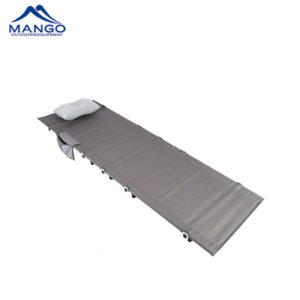Choosing the right camping bed is crucial for a comfortable and restful outdoor sleeping experience. With various options available, it’s essential to consider your needs and preferences. In this guide, we will discuss different types of camping beds and factors to consider when selecting the best one for you.
Camping Hammocks:
Camping hammocks have gained popularity among outdoor enthusiasts due to their lightweight and compact design. They are ideal for backpackers and hikers looking to minimize weight and bulk in their gear. Hammocks provide a unique sleeping experience, allowing you to sleep off the ground and sway gently in the breeze. Look for hammocks made from durable materials, with sturdy suspension systems and integrated bug netting for added comfort and protection.
Sleeping Pads:
Sleeping pads, also known as camping mats or sleeping mattresses, offer insulation and cushioning between you and the ground. They come in various styles, including self-inflating pads, air pads, and foam pads. Self-inflating pads are convenient as they automatically inflate when the valve is opened, while air pads require manual inflation. Foam pads are lightweight and provide good insulation but are bulkier. Consider factors such as thickness, insulation rating (R-value), weight, and packability when choosing a sleeping pad.
Aluminum Folding Camping Bed Cot
Camping Cots:
Camping cots provide an elevated sleeping surface, keeping you off the ground and providing better insulation. They are suitable for car camping and base camps, as they are bulkier and less portable than other options. Look for cots with sturdy frames made from materials like aluminum or steel, as well as durable fabric that can support your weight. Consider the cot’s weight capacity, dimensions when folded and unfolded, and ease of setup and takedown.
Air Mattresses:
Air mattresses are a popular choice for car camping and family camping trips. They offer comfort and support similar to traditional beds. Look for air mattresses made from puncture-resistant materials and with built-in air pumps or easy-to-use valves for quick inflation and deflation. Consider the mattress’s dimensions, weight capacity, and packed size to ensure it fits your tent and storage space.
Sleeping Bags with Integrated Pads:
Some sleeping bags come with integrated sleeping pads, eliminating the need for a separate pad. These sleeping bags often have a sleeve or pocket where the pad can be inserted, preventing it from sliding around during the night. This combination provides insulation and comfort in a compact package. Consider the temperature rating and materials of the sleeping bag, as well as the quality and thickness of the integrated pad.
Inflatable Loungers:
While not designed specifically for sleeping, inflatable loungers are versatile and comfortable options for relaxing and lounging at the campsite. They are lightweight, portable, and easy to inflate by scooping air into them. Inflatable loungers are suitable for daytime use and can double as makeshift beds if needed. Look for loungers made from durable materials like ripstop nylon and with features like headrests or cup holders for added comfort.
Bivy Sacks:
Bivy sacks, or bivouac sacks, are compact and lightweight shelters that combine a sleeping bag cover and a minimalistic tent. They are suitable for minimalist backpackers and those looking for a simple and efficient sleeping system. Bivy sacks provide protection from the elements and insects while being highly portable. Consider factors like waterproofness, breathability, and ease of entry and exit when choosing a bivy sack.
Interested in our outdoor gears?
Curious on how you can have these gears in your shop?
Or perhaps you’re interested in launching your very own private brand?
We are ready to help and inform you about gears, services and products. Just fill with the form and click the “ Get in touch” button. We will get back to you immediately.


